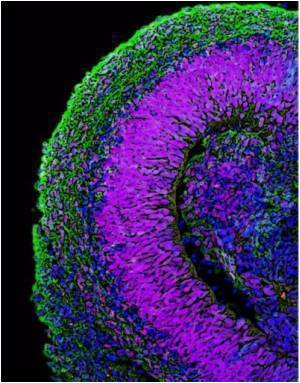
Understanding how stem cells mature opens the door for scientists and physicians to manipulate the process to meet the needs of patients, potentially treating such intractable conditions as Parkinson's disease and spinal injury.
"In the past, scientists trying to understand stem cell biology focused on genes and proteins. In our study, we looked at stem cell regulation in a different way-on the biochemical level, on a functional level. With metabolomics profiling, we were able to look at naturally occurring small molecules and how they control cell fate on a completely different level," Nature quoted Ding as saying.
The new paper describes parts of the stem cell "metabolome"- the complete set of substances ("metabolites") formed in metabolism, including all naturally occurring small molecules, biofluids, and tissues.
The scientists then compared this profile to those of more mature cells, specifically of nerve cells and heart cells.
After tallying the results, the scientists had found about 60 previously unidentified metabolites associated with the progression of stem cells to mature cells, as well as an unexpected pattern in the chemistry that mirrored the cells' increasing biological maturity.
Advertisement
"One of the most interesting aspects of metabolomics is how little we know. We don't know what the vast majority of metabolites are, or what they do. It is an area ripe for discovery," commented Siuzdak.
Advertisement
The group then analysed the resulting data using an open-access bioinformatics platform XCMS.
The XCMS software allows researchers to identify and assess metabolite and peptide features that show significant change between sample groups-in this case mouse stem cells versus mature cells.
The most difficult part of untargeted metabolomics studies is analysing the results and characterizing metabolites, said Oscar Yanes, the new paper's first author.
Still, Yanes shifted though the data on stem cells and identified an unexpected pattern- stem cell metabolites had highly unsaturated structures compared with mature cells, and levels of highly unsaturated molecules decreased as the stem cells matured.
Highly unsaturated molecules, which contain little hydrogen, can easily react and change into many other different types of molecules.
"The study reveals an astounding cellular strategy. The capacity of embryonic stem cells to generate a whole spectrum of cell types characteristic of different tissues (a phenomenon referred to as plasticity) is mirrored at the metabolic level," said Yanes.
"We were not expecting these results. Although in retrospect it makes sense that stem cells (which can form almost any cell) have metabolites that are chemically flexible," said Siuzdak.
The study was published in an advance, online edition of the prestigious journal Nature Chemical Biology.
Source-ANI
SAV












